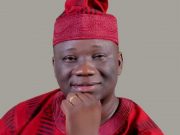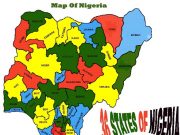Trinidad and Tobago-born British writer of works of fiction and nonfiction in English, Sir Vidiadhar Surajprasad Naipaul, commonly known as V.S. Naipaul, would seem to have Nigeria and the facts of Chief Moshood Kashimawo Olawale (MKO) Abiola’s death in military detention in mind when he wrote his famous novel, ‘Half of Life’. Renowned for and indeed underscored by the Swedish Academy which awarded him the 2001 Nobel Prize in Literature for his “incorruptible scrutiny in works that compel us to see the presence of suppressed histories”, summarized, Naipaul’s ‘Half of Life’ is a life of lie lionised to be true.
It was the life of Willie Somerset Chandran. Born to a Brahmin father, his father gave him the middle name, Somerset as an homage to English writer, Somerset Maugham. He however despised this middle name and in the bid to hide it, he left India for London to study. There, he shrouded off that name and faked the facts of his life for many years, mimicking in the process other people’s behavior, in order to hide his past. In the end, reality caught up with Somerset as he had to remove his self-imposed mask and eventually come to terms with “the presence of suppressed history”.
Since the announcement of his death in detention in 1998, a world that salivated for the actual truth of Abiola’s sudden death got swallowed in official narratives that lack logic. It is a cruel world where interrupting a flourishing life midstream is commonplace. It is also a world where suppressing and masking the truth of life’s interruption is a daily occurrence. Almost 24 years now after his passage, Nigeria has moved on to the next phase of its grisly life-dom. Here, we conclude without a conclusion because thoroughness and rigour are not part of our social order. The noise of the silence on Abiola’s death however persists, leaving an unfinished conversation of how MKO really died.
The military head of state, Abdulsalami Abubakar, a man who gained the peace of Abiola and Sani Abacha’s death, recently exhumed the facts of Abiola’s passing. And as they say in arithmetic, QED, the general magisterially packaged these “facts”, like a mortician, for eternal rest in the morgue. Abubakar had, in a live television programme, quenched the undying fire of speculations that Abiola died after sipping the tea he was offered by a visiting American delegation, led by secretary of state for African affairs, Thomas Pickering and consisting of assistant secretary of state, who later became the national security advisor, Susan Rice and Bill Twaddell, US ambassador to Nigeria. Abubakar said that, rather than poison that was speculated, Abiola died of natural causes.
“Well, I smile because there were lots of allegations here and there that we killed Abiola. As always, when I am talking about the late Abiola, I still thank God for directing me on things to do when he gave me the leadership of this country,” he said.
The narrative funneled out by the Abubakar military government was that, at the meeting the American team had with Abiola, he suddenly fell sick and as Abubakar himself narrated in the recent interview, “the security officers called the medical team to come and attend to him, and when they saw the situation, they said it was severe and needed to take him to the medical centre. So, it was the medical team plus the American team that took him to the medical centre. Unfortunately, at the medical centre he gave up”.
The prequel to Abiola’s death was the expiration of military despot, Abacha, a few weeks before. Up until then, Nigeria had exploded in a political turmoil provoked by Ibrahim Babangida’s stiff-necked decision to annul the June 12, 1993, election. No government in Nigerian history had evoked so much national perspiration as the goggled general’s. Yes, the history of military rule in Africa had been that of muzzling of freedom and free speech. Under Abacha’s, you couldn’t even sight the shadows of freedom, not to talk of its muzzle. Nigeria under him can be explained by that 1999 political drama produced by cinematographer, Tunde Kelani, entitled ‘Saworoide’. Abacha the titular was not only a despot, but his military epaulettes also dripped with blood. Opponents of his rule vamoosed in daylight and he clamped dissents in detention as easily as ants crowd a diabetic’s pee. Abiola’s wife, Kudirat, was shot dead in broad daylight and people lived in dread and apprehension. When he suddenly died on June 8, 1998, Nigeria exploded in a thunderous orgy of celebrations.
The death of Abiola, who had earlier been clamped in detention by Abacha for declaring himself president, exactly a month after Abacha’s, naturally provoked a conspiracy theory. Though Abubakar said he was grateful to providence that the American delegation’s presence at the scene of Abiola’s death provided enough alibi for his government’s innocence in the death, the delegation’s presence further gave vent to the conspiracy theory. As at this time, Nigeria’s intractable crises had proven enough embarrassment to the rest of the world, especially to an America which saw African dictators as hindrances to its self-assigned task of promoting global democracy, human rights, and good governance in the Third World. America’s economic interests were also stalling due to the protracted crises. It was thus difficult to glibly impeach the theory spiraling at Abiola’s death that his “killing” was America’s quest to put a permanent end to the democratic impasse that had seized Nigeria like a pestilence.
Precedence didn’t favour America either. Its leading espionage organ, the Central Intelligence Agency (CIA) had scooped frightening renown from all over the world for targeted killings of America’s perceived adversaries or persons who constituted stumbling blocks to its aspirations. While targeted killing is generally a euphemism for state assassination or murder, America’s state kingpins had always seen it as a statecraft tool. It is supervised by governments and carried out outside of judicial procedure and battlefield but enveloped by the shawl of nationalist determination to neutralise terrorists and combatants. For instance, it is said that 76 children and 29 adult bystanders were killed by the CIA in America’s serial attempts to kill the physician and founder of the Egyptian Islamic Jihad (EIJ) and ally of Al Qaeda, Ayman Al-Zawahiri. He had been indicted for his alleged role in the August 7, 1998, bombings of US embassies in Dar es Salaam, Tanzania, and Nairobi, Kenya.
CIA’s notoriety in this regard is a plethora. One of such was the Democratic Republic of Congo’s prime minister, Patrice Lumumba, who was nearly killed on September 26, 1960, by an American called Joe. He had arrived in Leopoldville (now Kinshasa) with poison to administer on Lumumba, which would have manifested as an incurable deadly disease. Lumumba, after a putsch, was later on January 17, 1961, in company with his two associates, Joseph Okito and Maurice Mpolo, executed by firing squad with Belgians supervising, their bodies thrown into shallow graves but later dug up, hacked in pieces, and dissolved in acid as Abacha ordered done to Ken Saro-Wiwa.
So also was the CIA’s attempt to assassinate Chile’s leftist politician, Salvador Allende in 1973. Aside from plowing the sum of $3 million into opposition to Allende’s 1964 presidential aspiration, on his win in 1970, President Richard Nixon approved a whopping sum of $10 million for Allende’s overthrow. The same went for Cuba’s late president, Fidel Castro, who in his own admission, America made 634 futile attempts to assassinate. One of such was a 1960 CIA assassination ploy where Castro’s box of favourite cigars was poisoned with a botulinum toxin which would have killed him instantly. Popularised by the stories of Sherlock Holmes, Clostridium botulinum, produced by gram-positive anaerobic bacteria, when ingested in food or laced on an open wound results in muscle paralysis, paralysis of the respiratory system, and then, death.
Even though the US senate attempted to wipe off this blood stains from Uncle Sam through a thorough investigation of this, culminating in President Gerald Ford’s 1976 statement that, “No employee of the United States government shall engage in, or conspire in, political assassination,” the world holds this with a pinch of salt. Many targeted killings allegedly supervised by America are said to have taken place since then.
Susan Rice’s memoir entitled ‘Tough Love: My Story of the Things Worth Fighting For’, which gave an account of what led to Abiola’s death, though plausible, is not entirely believable. Rice had served Abiola the infamous cup of tea which happened to be his last sip alive. She said she offered to give him the tea when Abiola suddenly lapsed into a coughing fit.
“About five minutes into the conversation, Abiola started to cough, at first mildly and intermittently, and then rackingly with consistency. Noticing a tea service on the table between us, I offered Abiola, ‘Would you like some tea to help calm your cough?’ ‘Yes,’ he said, with appreciation, and I poured him a cup. He sipped it, but continued coughing,” said Rice. Glib, suasive and evocative, isn’t it? She further wrote in the memoir that even upon taking the tea, Abiola’s persistent cough revved the more and when the team called a doctor to attend to him, he later pronounced his death, after an hour, as due to a heart attack.
The fact that though MKO was a Muslim, a religion that forbids autopsy notwithstanding, an autopsy was said to have been conducted on his remains which turned out negative. However, discarding the theory that the June 12 election winner could have been poisoned would be naïve. Research has shown that there are ten deadly poisons known to mankind and their powers vary. The poisons are arsenic, hemlock, dimethylmercury, polonium 210, mercury, tetrodotoxin, cyanide, Atropa belladonna, and aconitine. While arsenic is renowned for being the most potent of the lot, harvesting in its sack the hugest cadavers in its fury, it has been in existence from ancient times. It is preferred in targeted killings because it presents without colour, smell, or taste. Upon its administration, it manifests in vomiting, severe abdominal cramps, and ultimately, as the Yoruba will say, the hawker of eko (cornmeal porridge) in heaven stridently calls for patronage of her wares. While the list of its preys is endless, Napoleon Bonaparte, George III of England, and Simon Bolivar are its famous victims.
Hemlock as a poison was popularised in tales of the Greek philosopher Socrates’ execution. It has two variants; poison hemlock (Conium maculatum) and water hemlock (Cicuta species and Oenanthe crocata L). When administered, it presents with such numbing paralysis that, though the individual’s mind is continuously working, their physical movements grind to a halt by stealth and gradually lead to death. It is the same for dimethylmercury, known to be an extremely poisonous material known also to be a slow killer. Its victim is only aware of a problem when they have begun to sing the nunc dimittis. Even dosages as low as 0.1ml are renowned to be very lethal. This was the case in 1996 when a Dartmouth College, New Hampshire, Chemistry teacher had a drop of it trickle down her gloved hand. It went through the glove’s latex and an autopsy on her body ten months later indicated that the dimethylmercury led to her death.
It is the same for the rest of the poisons. While mercury could be sprayed in the air for victims to sniff to their death, tetrodotoxin is an uncommon poison found inside marine animals like Pufferfish and Octopus. Atropa belladonna poison is also found in plants. Aconitine, like Atropa, resides in plants and gained notoriety in history as the poison with which the 4th Roman emperor Claudius, also known as Tiberius Claudius Caesar Augustus Germanicus, was killed by his wife, Agrippina The Younger. Murdered at the age of 63, the empress merely mixed aconite with the mushroom meal she gave Claudius, a man who had been afflicted with a limp and slight deafness — the aftermath sickness at a young age. Traditional Yoruba medicine also believes that the sundried bile of a leopard ranks as one of the deadliest poisons on earth. Some of these poisons can never be captured by any autopsy and even if they do, manifest as organ failure.
This is however not to conclude that the tea offered MKO by Rice contained the poison that killed him. He indeed could have died a natural death. The strongest motive for anyone to murder Abiola and Abacha however lies in that, taking them out would ensure a tabular rasa political equation for the Nigerian polity, with both Nigerian and American political and governmental elites put in the stead to reap bountiful dividends therefrom. Abiola’s trial by ordeal in detention in the hands of Abacha could as well have been the gradual poison that killed him. Indeed, knowing how maniacal Abacha was, the general could have caused any of the above poisons to be administered on him, in the hope that his expiration would come gradually. While America will look too sophisticated to allow its topmost officials to be amateurishly present at a proposed murder scene, especially with a not too salutary global renown in targeted killings, sometimes, confidence has been held to lead to slips and errors.
Suspicions of Nigerian and international complicity in MKO’s death were further reinforced by the not too dissimilar pattern of his and Abacha’s expiration. While Abacha gradually bloated in his latter days on earth, with a noticeable podgy face seen in his far-between TV appearances, his corpse allegedly distended at burial point. Abubakar, while attempting to disclaim the government’s hand in his death, would seem to be saying that the sudden sickness that took Abiola’s life was the result of heart disease. But heart diseases don’t come suddenly. The fact that a government doctor allegedly attached to treat him in detention didn’t identify hitherto that his heart was tensioned will show suspected lax or nil medical attention from the government for him.
Like Naipaul’s ‘Half of Life’, in the fullness of time, the world may – if indeed they were killed – someday get full disclosure of what or who actually killed MKO and Abacha, as well as other suspected targeted killings by the Nigerian state. It is scary that individuals take out their fellow beings in the name of the state and manage to maintain straight faces, as well as keep their scotched hearts from view.
Unlike in the west, Nigeria does not have shamus agencies and organisations whose operations are independent of the state and who help to puncture these bloody balloons of knotty state and individual murders. Such efforts, aided by a police organisation that knew its onions, led to the unraveling of the killing in May last year of prominent Brazilian conservationist, Joao Claudio Ribeiro da Silva and his wife, Maria do Espirito Santo da, who were ambushed while riding on a bicycle in Para state, near the city of Maraba. The bodies of the couple were found in Praialta-Piranheira, the nature reserve where they resided for 24 years, with Claudio’s ear wickedly cut off. He had repeatedly warned that those who issued persistent death threats against him, consisting of loggers and cattle ranchers, might not relent until they got him.
Of course, like every other sector of Nigerian life, journalistic investigative reporting is almost as dead as a dodo. Otherwise, well-funded media investigators could also undertake to unravel targeted killings. Though the investigations could take years, they will ultimately remove the shawls covering the identities of assassins covered in state clothing which many of our leaders are.
- Popular columnist, Dr Festus Adedayo sent this in from Ibadan, the capital city of Oyo State


































































